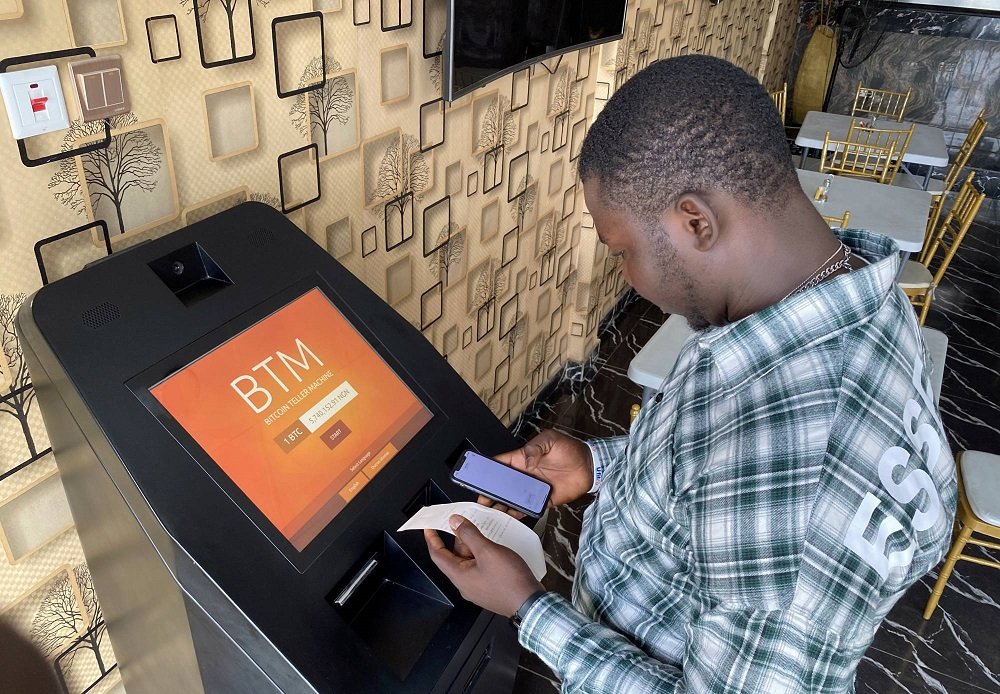Welcome to the volatile world of cryptocurrency, where fortunes are made overnight, halved by morning, and doubled by lunchtime tomorrow.
Here, digital assets are king: memes and JPEG files turn twentysomethings into multimillionaires, crypto holds up government stimulus packages, and riot police deal with anti-Bitcoin protestors.
But beneath the headline-grabbing hijinks and excesses, there’s a new digital transformation underway that could fundamentally alter the workings of the internet and business while simultaneously giving millions of ordinary people greater control of their financial destiny.
If that’s news to you, that’s not surprising—few people, even the most influential brains in crypto, know how to communicate what’s happening.
First, a crash course
Cryptocurrencies, which include the likes of Bitcoin, Ether, the ‘memecoin’ Dogecoin, and tens of thousands of others, are a type of digital asset. A digital asset is a uniquely identifiable piece of computer code that for reasons of utility, artistic merit, or pure speculation has value.
Despite the name, few cryptocurrencies are euro and dollar alternatives; most have specific purposes. Bitcoin advocates increasingly tout the coin as a store of a wealth, a sort of ‘digital gold’. The Ether token powers software development on the Ethereum network. Filecoin stores and retrieves encrypted data from thousands of globally distributed hard drives. Many other coins and tokens have yet to prove their value, but that hasn’t stopped giddy investors/gamblers betting the house on them.
Crypto’s secret sauce is its underlying technology, ‘blockchain’. In overly simple terms, blockchain is a type of database, where ‘blocks’ of data are linked by ‘chains’ of verification.
Unlike a traditional database maintained by a single authority, such as a department within a business, bank, or government, a blockchain database is distributed between computers on a network. A blockchain is therefore ‘decentralised’ rather than centralised.
Before a transaction—such as a transfer of money, sign-off on a process or procedure, or the fulfilment of a contractual obligation—can be validated and permanently recorded in the database, a majority of computers on the network must ‘approve’ it. Once the transaction is recorded, it cannot be deleted or manipulated. This ensures security and builds network trust that the data stored on the blockchain is accurate.
Why does this matter?
Centralisation is the internet status quo. It’s the reason you lost access to your Facebook, Instagram, and WhatsApp accounts in October and why The Irish Times, BBC, and The Guardian all went offline for hours in June when ‘content delivery network’ Fastly experienced an outage.
When there is a single controlling authority whose integrity fails due to a hack, fraud, or human error, the whole interlinked system can come down with it, à la Facebook, Fastly, and Wall Street circa 2008.
Blockchain enables greater security and transparency by distributing and decentralising decision-making and validation among thousands or even millions of participants, thereby drastically reducing the likelihood of an unexpected issue.
If you believe the analysts, decentralisation will be the driving force in the next evolution of the internet. For now, what matters is that blockchain technology and cryptocurrencies are here and already being applied in countless real-world ways by start-ups and blue chips, including DHL, IBM, and PwC.
The State of Delaware uses blockchain to archive public records and secure private documents. In Africa and Latin America, crypto is used to transfer money where local currencies and banking systems are unstable and unreliable.

Technology moves fast, but it’s the intangibility of Bitcoin et al—their very lack of earthly presence—that makes them especially difficult to comprehend. Crypto’s combination of computer science and the markets with dense internet subculture and philosophical debates about ‘value’ means that the supply of simple information and voices of authority isn’t really there.
Taken all together like this, blockchain providers and crypto exchanges have an impossible task cutting through to the public and business. Instead, they need to go back to the basics and translate technobabble into useful, readily understood information.
Three steps to effective crypto communication
1. Define the terms
Describing blockchain and cryptocurrency without resorting to jargon and technical language is difficult, but it’s a fundamental step towards widespread adoption.
Experts must speak in the plainest terms, using simple English, analogies, and real-world examples of blockchain and cryptocurrency. The ‘nutshell’ definitions must be easily understood and repeated.
Paradigm shifts, however, are far harder to communicate and require careful consideration of the audience, particularly generational audiences, and their ability or even desire to grasp certain concepts and ideas.
Blockchain and cryptocurrencies are enabling a transition towards the ‘metaverse’, a virtual world where the digital and physical merge and a purely digital object—like an image or a video clip or even a 3D rendering of a table and chairs—can be just as tangible, useful and, crucially, valuable as a physical one.
Even for the so-called digital natives of the turn of the century, the Millennials, this sounds like sci-fi. For Gen Z-ers and their successors the Gen Alphas, who are growing up completely integrated into the digital world (and are likely to be the first ‘inhabitants’ of the metaverse), paying the equivalent of hundreds or even thousands of euros for something that only exists on the internet isn’t such a strange idea.
2. Sell the value
Even if I get the concepts of blockchain and cryptocurrency, why should I care? What good is 0.0015 Bitcoin or a ‘pet rock’ when I have a fistful of euros and a pension plan? Why should my business spend millions investing in a new technology? After definitions are established and understood, value proposition follows.
Again, audience identification and segmentation are important. Each group needs a different elevator pitch, but the fundamentals of the pitch remain the same: you must understand what motivates them, what they value, and how to approach them.
For the CEO, blockchain and cryptocurrencies can streamline decision-making, improve security, and cut out costly intermediaries. For the politician and the central banker, the crypto markets evoke scepticism, even hostility. In the first instance, communications are benefits-focused; in the second, the approach is collaborative, focused on assuaging concerns.
For everyone else, crypto is an opportunity to make money. In Ireland, the average deposit account interest rate is 0.01%—in pure ROI terms, cash in a bank account may as well be cash behind the sofa. Apps like Coinbase and Revolut give retail investors the chance to invest small sums in cryptocurrencies, potentially earning them a return that they can enjoy or invest again.

3. Be seen and heard
Because the terms, value, and use cases of blockchain and crypto are so poorly understood, journalists and politicians tend to report what everyone does understand: fear, uncertainty, and doubt.
This has created a vacuum. Despite crypto mania gripping the public as far back as 2017, basic questions remain unanswered and misconceptions common. Irish and international blockchain and crypto companies have done a generally poor job of establishing even a modest baseline of understanding, and this is hampering broader adoption.
These companies need to be proactive. They must choose their spokespeople and bullishly pursue media opportunities, meetings with government, and trade bodies. Information should be freely available to any stakeholder who wants it—website hubs, social media infographics, e-books, podcast explainers, and guides written in simple English are central to crypto content strategy.
What happens next?
Blockchain and cryptocurrency are still young technologies. While blockchain has demonstrable business utility and will likely see the same slow-but-steady adoption as data analytics and AI in the 2010s, the obstacle before crypto is perception.
So long as the public view Bitcoin, Ether, and the rest as hyper-volatile playthings for tech obsessives, anti-Wall Streeters, and the Silicon Valley set, crypto will remain out of the mainstream.
The real goal for crypto exchanges and financial services companies should be to mount a successful charm offensive: explain the basics, soberly present the benefits and risks, downplay the alienating memes, and ultimately present crypto as a new, strange but inevitable part of the twenty-first-century economy.

About the author
Declan is 360’s primary content creator, responsible for strategising, managing, and writing editorial campaigns for our client portfolio. He ghostwrites opinion editorials for C-level leadership and edits and publishes 360’s Full Circle magazine. Previously, Declan freelanced as a journalist and voiceover.
